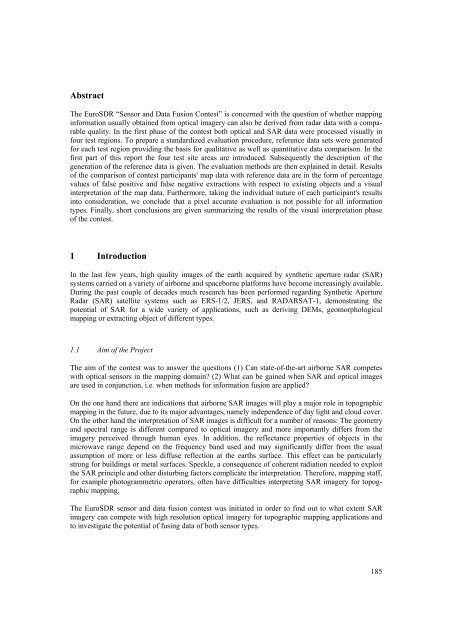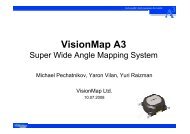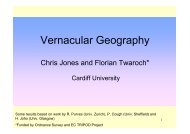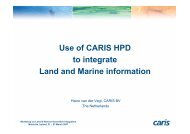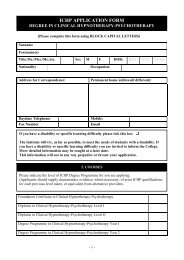EuroSDR Projects - Host Ireland
EuroSDR Projects - Host Ireland
EuroSDR Projects - Host Ireland
You also want an ePaper? Increase the reach of your titles
YUMPU automatically turns print PDFs into web optimized ePapers that Google loves.
Abstract<br />
The <strong>EuroSDR</strong> “Sensor and Data Fusion Contest” is concerned with the question of whether mapping<br />
information usually obtained from optical imagery can also be derived from radar data with a comparable<br />
quality. In the first phase of the contest both optical and SAR data were processed visually in<br />
four test regions. To prepare a standardized evaluation procedure, reference data sets were generated<br />
for each test region providing the basis for qualitative as well as quantitative data comparison. In the<br />
first part of this report the four test site areas are introduced. Subsequently the description of the<br />
generation of the reference data is given. The evaluation methods are then explained in detail. Results<br />
of the comparison of contest participants' map data with reference data are in the form of percentage<br />
values of false positive and false negative extractions with respect to existing objects and a visual<br />
interpretation of the map data. Furthermore, taking the individual nature of each participant's results<br />
into consideration, we conclude that a pixel accurate evaluation is not possible for all information<br />
types. Finally, short conclusions are given summarizing the results of the visual interpretation phase<br />
of the contest.<br />
1 Introduction<br />
In the last few years, high quality images of the earth acquired by synthetic aperture radar (SAR)<br />
systems carried on a variety of airborne and spaceborne platforms have become increasingly available.<br />
During the past couple of decades much research has been performed regarding Synthetic Aperture<br />
Radar (SAR) satellite systems such as ERS-1/2, JERS, and RADARSAT-1, demonstrating the<br />
potential of SAR for a wide variety of applications, such as deriving DEMs, geomorphological<br />
mapping or extracting object of different types.<br />
1.1 Aim of the Project<br />
The aim of the contest was to answer the questions (1) Can state-of-the-art airborne SAR competes<br />
with optical sensors in the mapping domain? (2) What can be gained when SAR and optical images<br />
are used in conjunction, i.e. when methods for information fusion are applied?<br />
On the one hand there are indications that airborne SAR images will play a major role in topographic<br />
mapping in the future, due to its major advantages, namely independence of day light and cloud cover.<br />
On the other hand the interpretation of SAR images is difficult for a number of reasons: The geometry<br />
and spectral range is different compared to optical imagery and more importantly differs from the<br />
imagery perceived through human eyes. In addition, the reflectance properties of objects in the<br />
microwave range depend on the frequency band used and may significantly differ from the usual<br />
assumption of more or less diffuse reflection at the earths surface. This effect can be particularly<br />
strong for buildings or metal surfaces. Speckle, a consequence of coherent radiation needed to exploit<br />
the SAR principle and other disturbing factors complicate the interpretation. Therefore, mapping staff,<br />
for example photogrammetric operators, often have difficulties interpreting SAR imagery for topographic<br />
mapping.<br />
The <strong>EuroSDR</strong> sensor and data fusion contest was initiated in order to find out to what extent SAR<br />
imagery can compete with high resolution optical imagery for topographic mapping applications and<br />
to investigate the potential of fusing data of both sensor types.<br />
185


